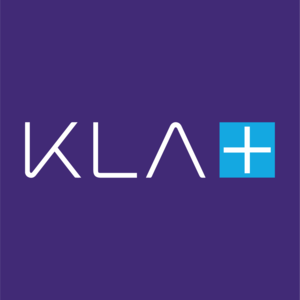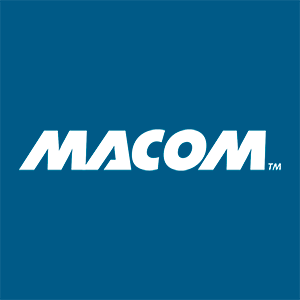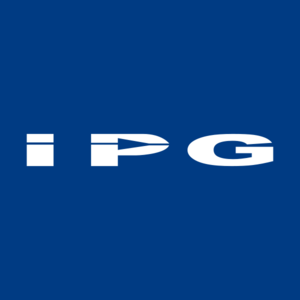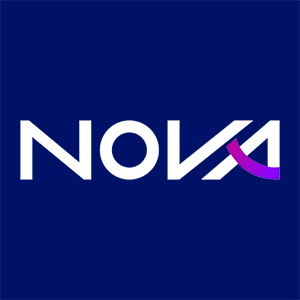
Nova (NVMI)
We love companies like Nova. Its blend of high growth and robust profitability makes for an attractive return algorithm.― StockStory Analyst Team
1. News
2. Summary
Why We Like Nova
Headquartered in Israel, Nova (NASDAQ:NVMI) is a provider of quality control systems used in semiconductor manufacturing.
- Market share has increased this cycle as its 27% annual revenue growth over the last five years was exceptional
- Earnings per share grew by 33.1% annually over the last five years and trumped its peers
- Powerful free cash flow generation enables it to reinvest its profits or return capital to investors consistently


We’re fond of companies like Nova. The valuation seems fair when considering its quality, so this might be a prudent time to invest in some shares.
Why Is Now The Time To Buy Nova?
High Quality
Investable
Underperform
Why Is Now The Time To Buy Nova?
Nova is trading at $320.20 per share, or 35.8x forward P/E. Many semiconductor names may carry a lower valuation multiple, but Nova’s price is fair given its business quality.
By definition, where you buy a stock impacts returns. Still, our extensive analysis shows that investors should worry much more about business quality than entry price if the ultimate goal is long-term returns.
3. Nova (NVMI) Research Report: Q3 CY2025 Update
Semiconductor quality control company Nova (NASDAQ:NVMI) reported Q3 CY2025 results exceeding the market’s revenue expectations, with sales up 25.5% year on year to $224.6 million. Guidance for next quarter’s revenue was optimistic at $220 million at the midpoint, 2.4% above analysts’ estimates. Its non-GAAP profit of $2.16 per share was in line with analysts’ consensus estimates.
Nova (NVMI) Q3 CY2025 Highlights:
- Revenue: $224.6 million vs analyst estimates of $221.2 million (25.5% year-on-year growth, 1.5% beat)
- Adjusted EPS: $2.16 vs analyst estimates of $2.15 (in line)
- Adjusted Operating Income: $72.85 million vs analyst estimates of $72.98 million (32.4% margin, in line)
- Revenue Guidance for Q4 CY2025 is $220 million at the midpoint, above analyst estimates of $214.9 million
- Adjusted EPS guidance for Q4 CY2025 is $2.11 at the midpoint, above analyst estimates of $2.09
- Operating Margin: 28.4%, in line with the same quarter last year
- Free Cash Flow Margin: 29.8%, up from 24.1% in the same quarter last year
- Inventory Days Outstanding: 171, down from 180 in the previous quarter
- Market Capitalization: $10.15 billion
Company Overview
Headquartered in Israel, Nova (NASDAQ:NVMI) is a provider of quality control systems used in semiconductor manufacturing.
Nova was founded in May 1993 by Giora Dishon and Moshe Finarov. Dishon held a Phd in materials science and Finarov a Phd in semiconductor physics. The company went public in April of 2000 with a NASDAQ listing.
Semiconductor manufacturing begins with a silicon wafer upon which chips are constructed through the application of thin layers of film that act as conductors, semiconductors, or insulators. Precision is key, as deviations in materials, measurements, or temperatures could result in defects. Strong quality and process control therefore involves constant monitoring and measurement of the silicon wafers and manufacturing environment through each step of the process. Trends in the semiconductor market such as smaller form factors and increases in 3D technology increase the need for improved quality and process control.
Nova’s product portfolio includes a range of metrology (measurement) technologies applied to dimensional, film, material, and chemical measurements across the semiconductor manufacturing process. Nova goes to market with two product divisions. The ‘Dimensional Metrology Division’ (DMD) uses optical measurement technologies while the ‘Materials Metrology Division’ (MMD) employs x-ray based solutions. Accompanying these products is a suite of software that enables customers to model and design elements needed in the semiconductor manufacturing process.
Competitors offering semiconductor process control systems include KLA Corporation (NASDAQ:KLAC), ASML Holdings (NASDAQ:ASML), Lam Research (NASDAQ:LRCX), and Thermo Fisher Scientific (NYSE:TMO).
4. Revenue Growth
A company’s long-term sales performance is one signal of its overall quality. Any business can experience short-term success, but top-performing ones enjoy sustained growth for years. Luckily, Nova’s sales grew at an incredible 27% compounded annual growth rate over the last five years. Its growth surpassed the average semiconductor company and shows its offerings resonate with customers, a great starting point for our analysis. Semiconductors are a cyclical industry, and long-term investors should be prepared for periods of high growth followed by periods of revenue contractions (which can sometimes offer opportune times to buy).

Long-term growth is the most important, but short-term results matter for semiconductors because the rapid pace of technological innovation (Moore's Law) could make yesterday's hit product obsolete today. Nova’s annualized revenue growth of 26.3% over the last two years aligns with its five-year trend, suggesting its demand was predictably strong. 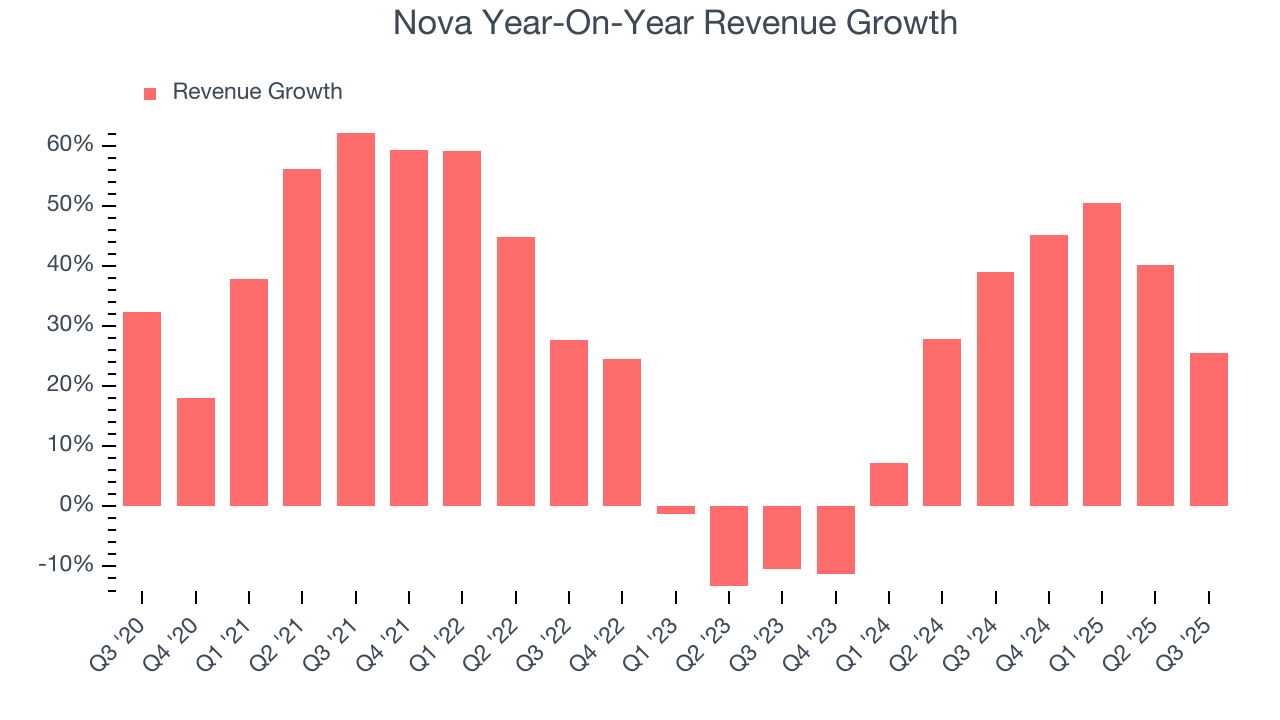
This quarter, Nova reported robust year-on-year revenue growth of 25.5%, and its $224.6 million of revenue topped Wall Street estimates by 1.5%. Beyond the beat, this marks 7 straight quarters of growth, showing that the current upcycle has had a good run - a typical upcycle usually lasts 8-10 quarters. Company management is currently guiding for a 13% year-on-year increase in sales next quarter.
Looking further ahead, sell-side analysts expect revenue to grow 4.8% over the next 12 months, a deceleration versus the last two years. This projection doesn't excite us and indicates its products and services will face some demand challenges. At least the company is tracking well in other measures of financial health.
5. Product Demand & Outstanding Inventory
Days Inventory Outstanding (DIO) is an important metric for chipmakers, as it reflects a business’ capital intensity and the cyclical nature of semiconductor supply and demand. In a tight supply environment, inventories tend to be stable, allowing chipmakers to exert pricing power. Steadily increasing DIO can be a warning sign that demand is weak, and if inventories continue to rise, the company may have to downsize production.
This quarter, Nova’s DIO came in at 171, which is 10 days below its five-year average. At the moment, these numbers show no indication of an excessive inventory buildup.
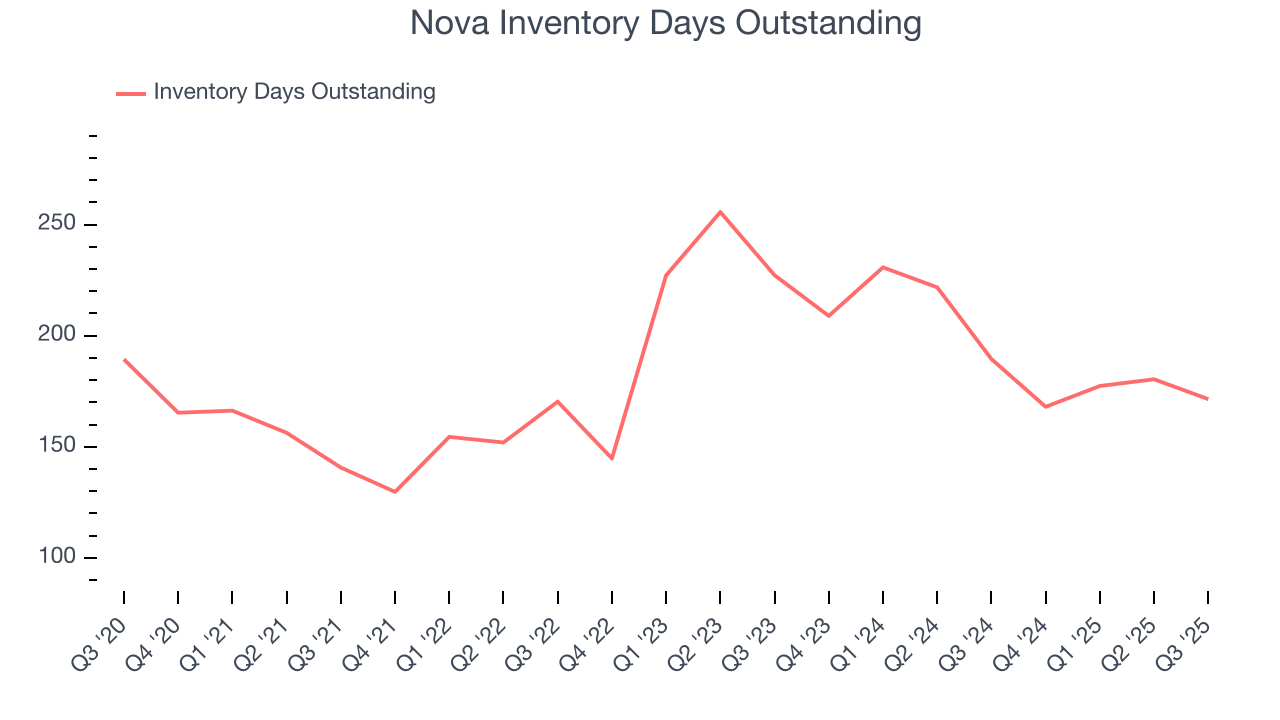
6. Gross Margin & Pricing Power
In the semiconductor industry, a company’s gross profit margin is a critical metric to track because it sheds light on its pricing power, complexity of products, and ability to procure raw materials, equipment, and labor.
Nova’s gross margin is well ahead of its semiconductor peers, and its strong pricing power is an output of its differentiated, value-add products. As you can see below, it averaged an excellent 57.4% gross margin over the last two years. Said differently, roughly $57.38 was left to spend on selling, marketing, R&D, and general administrative overhead for every $100 in revenue. 
This quarter, Nova’s gross profit margin was 56.7%, in line with the same quarter last year. On a wider time horizon, the company’s full-year margin has remained steady over the past four quarters, suggesting its input costs (such as raw materials and manufacturing expenses) have been stable and it isn’t under pressure to lower prices.
7. Operating Margin
Operating margin is a key measure of profitability. Think of it as net income - the bottom line - excluding the impact of taxes and interest on debt, which are less connected to business fundamentals.
Nova has been an efficient company over the last two years. It was one of the more profitable businesses in the semiconductor sector, boasting an average operating margin of 28.3%. This result isn’t surprising as its high gross margin gives it a favorable starting point.
Analyzing the trend in its profitability, Nova’s operating margin rose by 2.3 percentage points over the last five years, as its sales growth gave it operating leverage.

This quarter, Nova generated an operating margin profit margin of 28.4%, in line with the same quarter last year. This indicates the company’s cost structure has recently been stable.
8. Earnings Per Share
Revenue trends explain a company’s historical growth, but the long-term change in earnings per share (EPS) points to the profitability of that growth – for example, a company could inflate its sales through excessive spending on advertising and promotions.
Nova’s EPS grew at an astounding 33.1% compounded annual growth rate over the last five years, higher than its 27% annualized revenue growth. This tells us the company became more profitable on a per-share basis as it expanded.
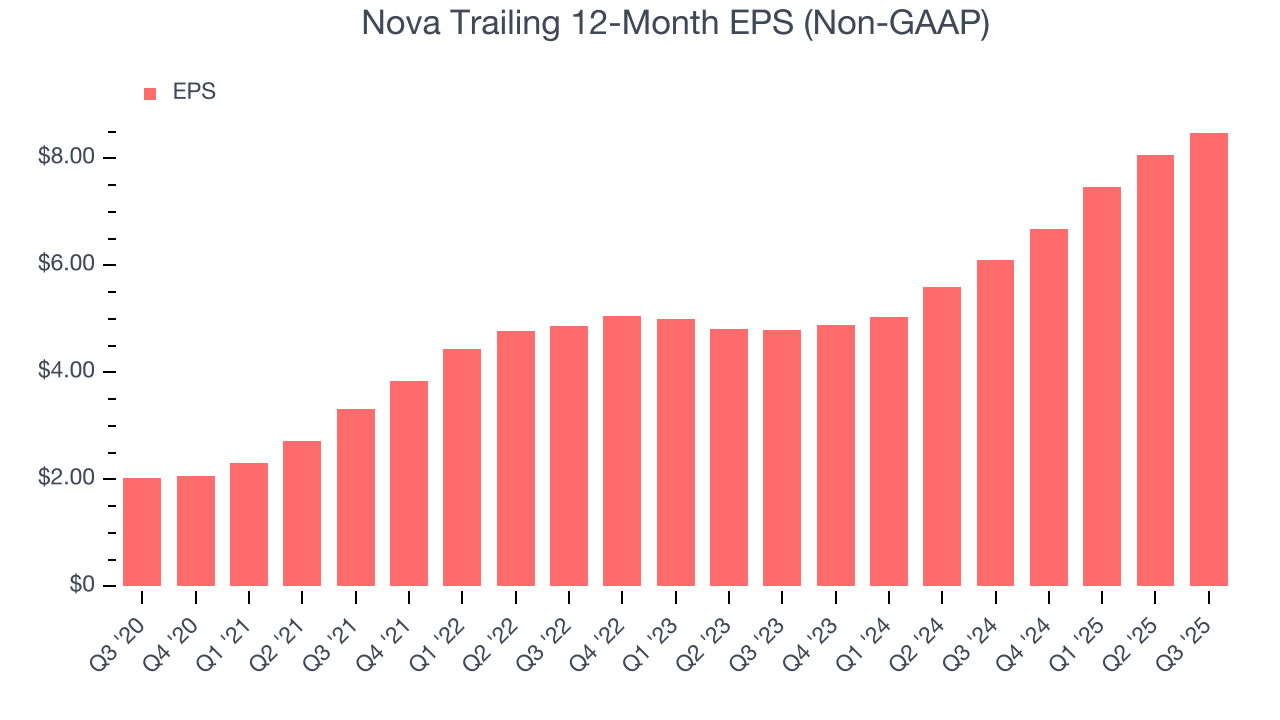
Diving into Nova’s quality of earnings can give us a better understanding of its performance. As we mentioned earlier, Nova’s operating margin was flat this quarter but expanded by 2.3 percentage points over the last five years. This was the most relevant factor (aside from the revenue impact) behind its higher earnings; interest expenses and taxes can also affect EPS but don’t tell us as much about a company’s fundamentals.
In Q3, Nova reported adjusted EPS of $2.16, up from $1.74 in the same quarter last year. This print was close to analysts’ estimates. Over the next 12 months, Wall Street expects Nova’s full-year EPS of $8.48 to grow 4.1%.
9. Cash Is King
If you’ve followed StockStory for a while, you know we emphasize free cash flow. Why, you ask? We believe that in the end, cash is king, and you can’t use accounting profits to pay the bills.
Nova has shown robust cash profitability, and if it can maintain this level of cash generation, will be in a fine position to ride out cyclical downturns while investing in plenty of new products and returning capital to investors. The company’s free cash flow margin averaged 28% over the last two years, quite impressive for a semiconductor business.
Taking a step back, we can see that Nova’s margin dropped by 3.9 percentage points over the last five years. Rising cash conversion would be ideal, but we’re willing to live with Nova’s performance for now because it’s still one of the more cash generative and investable businesses in its space. If its declines continue, it could signal increasing investment needs and capital intensity.
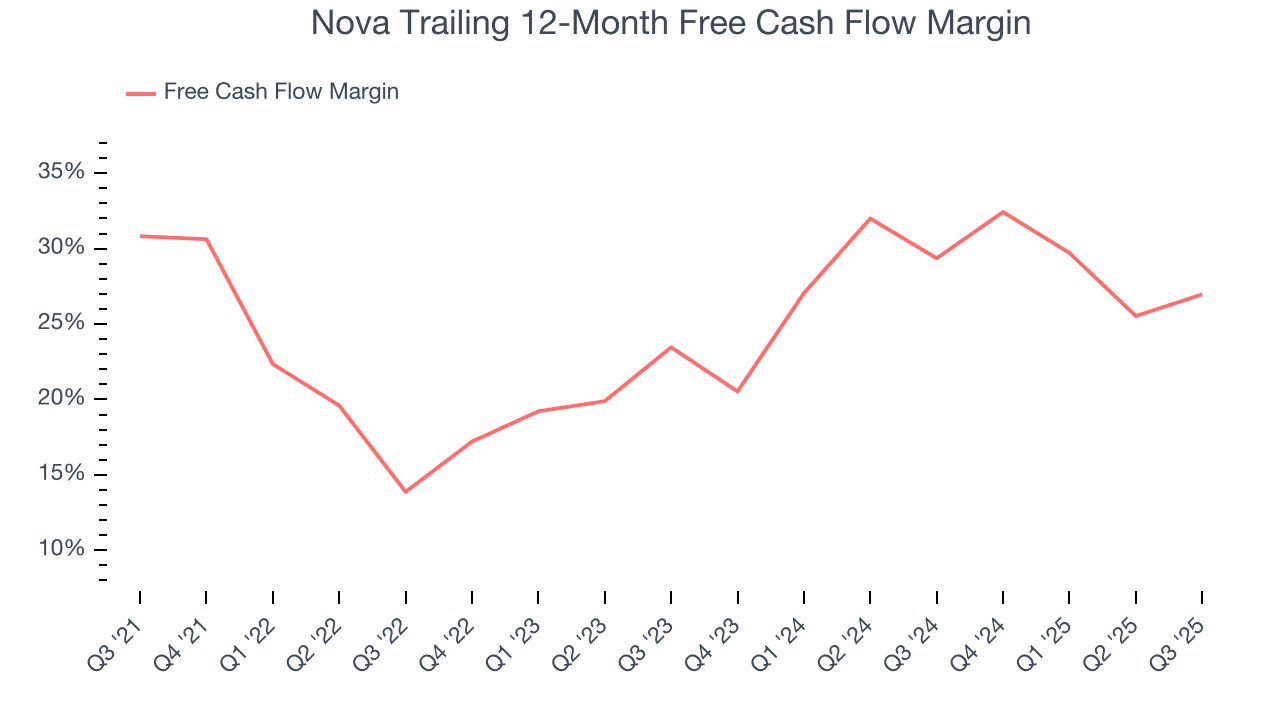
Nova’s free cash flow clocked in at $66.94 million in Q3, equivalent to a 29.8% margin. This result was good as its margin was 5.7 percentage points higher than in the same quarter last year. Its cash profitability was also above its two-year level, and we hope the company can build on this trend.
10. Return on Invested Capital (ROIC)
EPS and free cash flow tell us whether a company was profitable while growing its revenue. But was it capital-efficient? A company’s ROIC explains this by showing how much operating profit it makes compared to the money it has raised (debt and equity).
Nova’s five-year average ROIC was 31.2%, beating other semiconductor companies by a wide margin. This illustrates its management team’s ability to invest in attractive growth opportunities and produce tangible results for shareholders.

11. Balance Sheet Assessment
One of the best ways to mitigate bankruptcy risk is to hold more cash than debt.
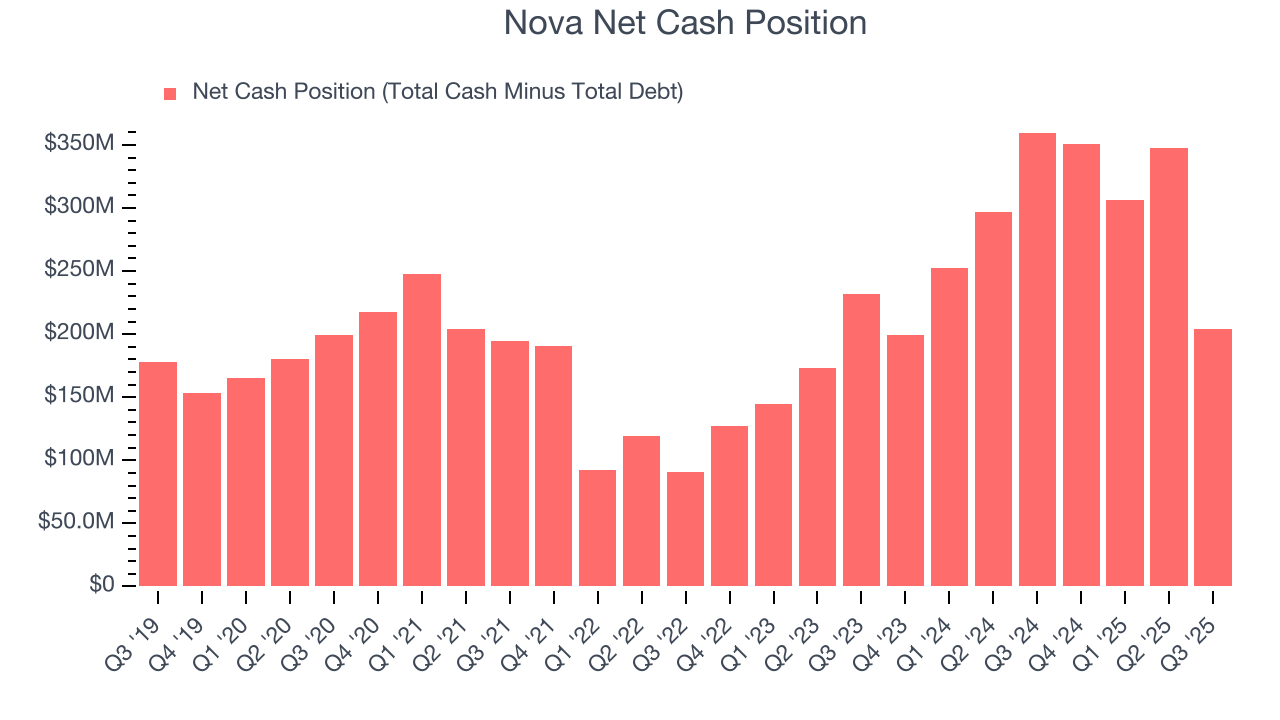
Nova is a profitable, well-capitalized company with $1.09 billion of cash and $883.7 million of debt on its balance sheet. This $204.3 million net cash position is 2.2% of its market cap and gives it the freedom to borrow money, return capital to shareholders, or invest in growth initiatives. Leverage is not an issue here.
12. Key Takeaways from Nova’s Q3 Results
A highlight during the quarter was Nova’s improvement in inventory levels. We were also glad its revenue guidance for next quarter exceeded Wall Street’s estimates. Overall, this print had some key positives. The market seemed to be hoping for more, and the stock traded down 8.6% to $312 immediately following the results.
13. Is Now The Time To Buy Nova?
Updated: December 4, 2025 at 9:27 PM EST
We think that the latest earnings result is only one piece of the bigger puzzle. If you’re deciding whether to own Nova, you should also grasp the company’s longer-term business quality and valuation.
Nova is a high-quality business worth owning. First of all, the company’s revenue growth was exceptional over the last five years. And while its projected EPS for the next year is lacking, its astounding EPS growth over the last five years shows its profits are trickling down to shareholders. On top of that, Nova’s powerful free cash flow generation enables it to stay ahead of the competition through consistent reinvestment of profits.
Nova’s P/E ratio based on the next 12 months is 35.8x. Looking across the spectrum of semiconductor companies today, Nova’s fundamentals shine bright. We like the stock at this price.
Wall Street analysts have a consensus one-year price target of $361.43 on the company (compared to the current share price of $320.20), implying they see 12.9% upside in buying Nova in the short term.
